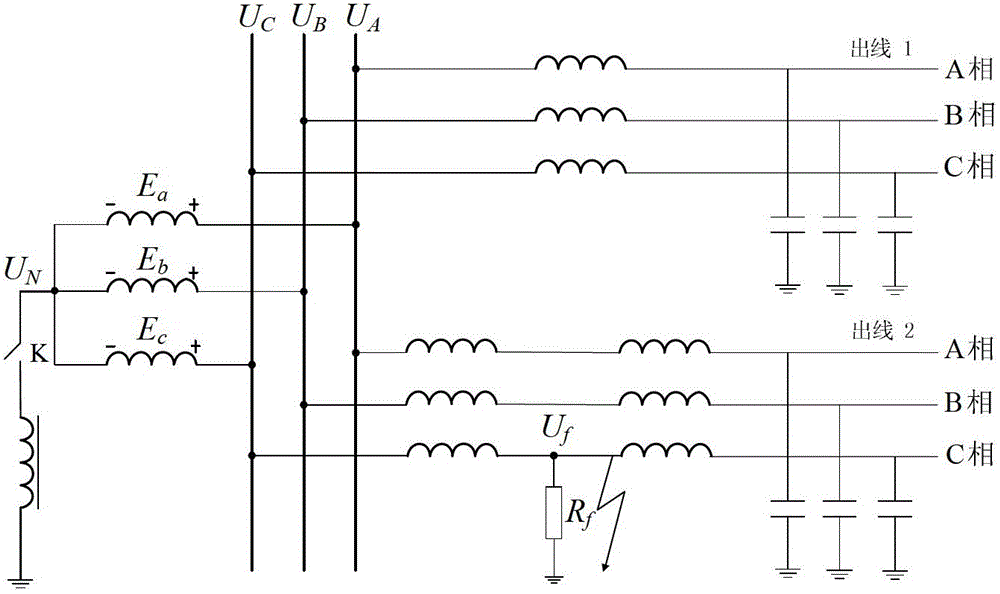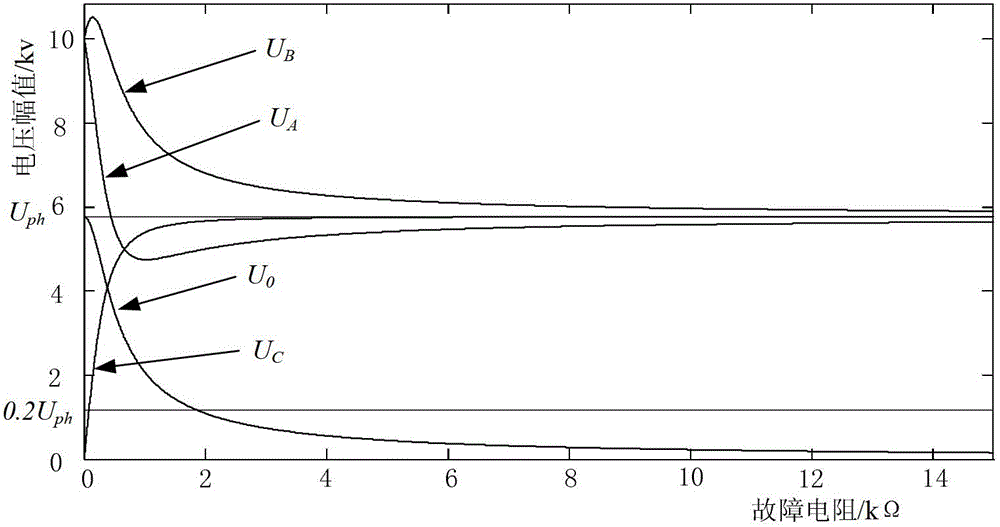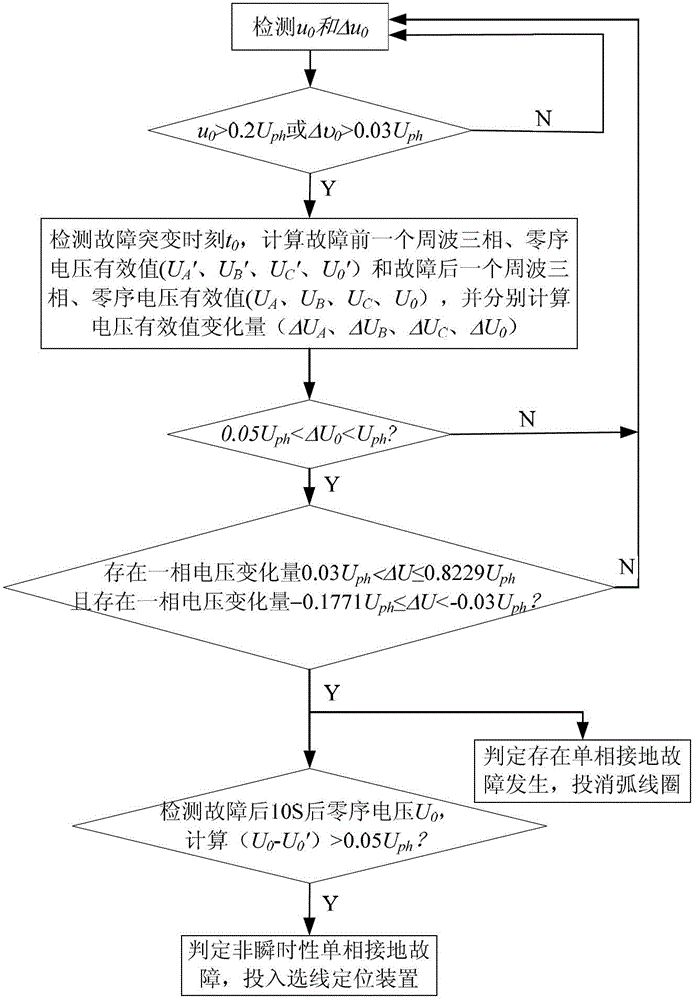Single-phase-to-earth fault identification method for neutral point non-effectively earthed system
A single-phase grounding fault, non-effective grounding technology, applied in fault locations, measuring devices, instruments, etc., can solve the problem of single-phase high-resistance grounding faults that cannot be identified, and achieve the effect of ensuring reliability
- Summary
- Abstract
- Description
- Claims
- Application Information
AI Technical Summary
Problems solved by technology
Method used
Image
Examples
Embodiment Construction
[0019] When a single-phase ground fault occurs in a neutral point non-effectively grounded system, such as figure 1 , when considering the influence of fault resistance, assuming that a single-phase ground fault occurs on phase C, Z C is the capacitive reactance of each phase of the system to ground, and there is Z C =-jX C , R f is the fault resistance, U ph is the phase voltage rating, and the system voltage (bus zero-sequence voltage and three-phase voltage) has the following rules:
[0020] When the fault resistance is zero, the fault phase (C phase) voltage decreases to zero, and the non-fault phase (A, B) voltage rises to 1.732U ph , the zero-sequence voltage rises to the phase voltage U ph .
[0021] When the system is a neutral point ungrounded system, the characteristics of each phase voltage changing with the fault resistance are as follows: figure 2 , the bus zero-sequence voltage decreases with the increase of the fault resistance, but it is still greater t...
PUM
 Login to View More
Login to View More Abstract
Description
Claims
Application Information
 Login to View More
Login to View More - R&D
- Intellectual Property
- Life Sciences
- Materials
- Tech Scout
- Unparalleled Data Quality
- Higher Quality Content
- 60% Fewer Hallucinations
Browse by: Latest US Patents, China's latest patents, Technical Efficacy Thesaurus, Application Domain, Technology Topic, Popular Technical Reports.
© 2025 PatSnap. All rights reserved.Legal|Privacy policy|Modern Slavery Act Transparency Statement|Sitemap|About US| Contact US: help@patsnap.com



